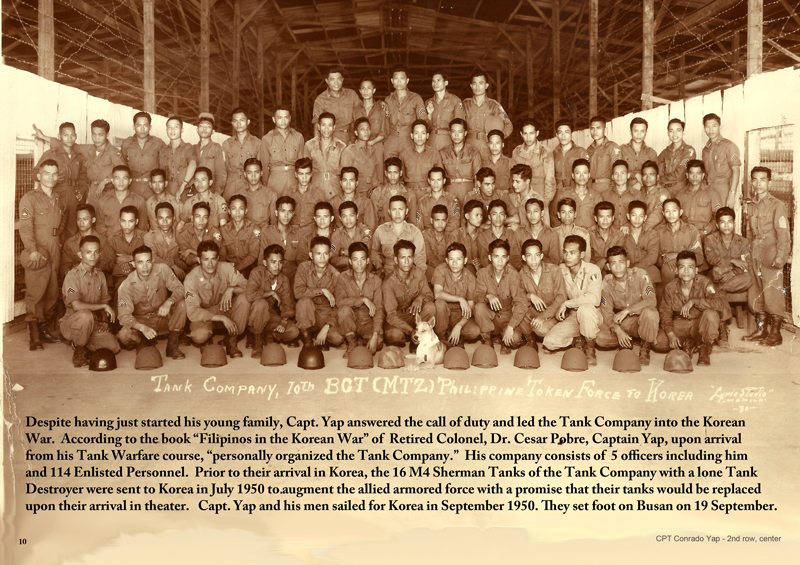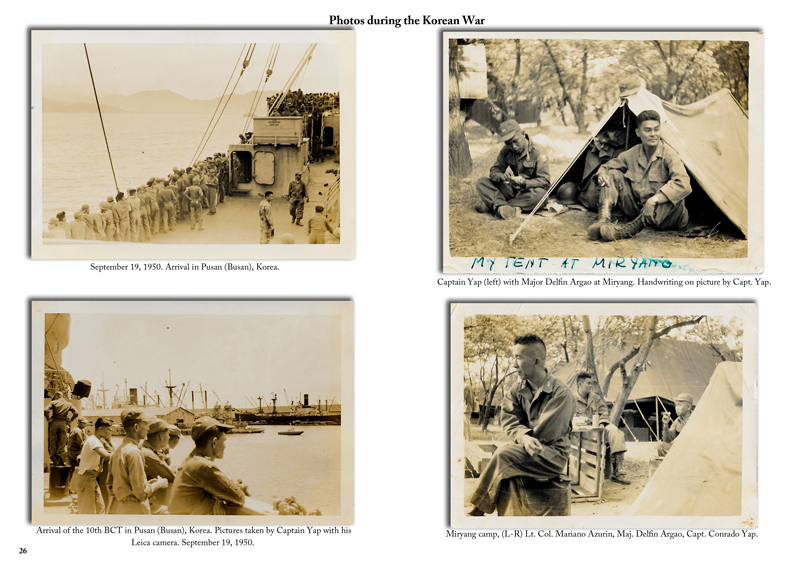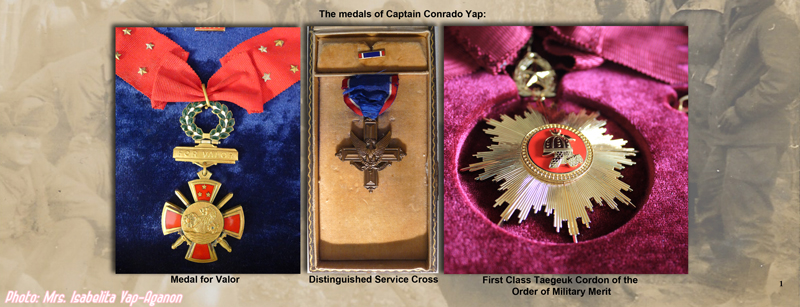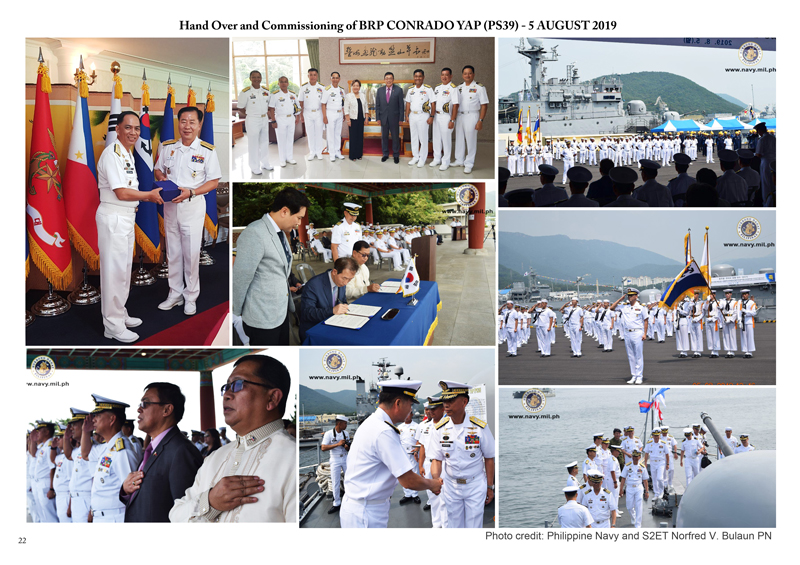By Honorary Reporter Shaira Lorraine Robinol from Philippines
Photos= Isabelita Yap- Aganon

Tank Company, 10th Battalion Combat Team, Philippine Expeditionary Forces to Korea

Photos taken by Yap during the Korean War
The Battle of Yuldong during the Korean War was fought from April 22-23, 1951, between the Chinese People's Volunteer Army's 44th Division and the Philippine Expeditionary Forces to Korea's (PEFTOK) 10th Battalion Combat Team in Yeoncheon-gun County, Gyeonggi-do Province.
During the war, 1,468 Philippine troops joined United Nations Command forces, among them a young officer who became the most decorated Philippine serviceman of the conflict.
The late Conrado Dumlao Yap received the Armed Forces of the Philippines Medal of Valor, his country's highest military honor, and the U.S. Distinguished Service Cross, America's top award for a foreign soldier. His 2018 award of the Taegeuk Order of Military Merit from Korea makes him the only Filipino to have earned the highest military honors from each of the three countries.
Yap's daughter Isabelita Yap-Aganon told of her father's life.
Early life
Conrado Dumlao Yap was born in 1921 in Candelaria, Zambales. After his father, a judge, died when Yap was just 10, his mother had to take care of her four children. He was sent to live with his uncle, also a judge, and finished at the top of his class in high school in 1937. He later studied electrical engineering at the Mapua Institute of Technology. Yap was motivated to serve his country amid the events in Europe during this period and the Japanese offensive in Asia.

Medals given to Capt. Conrado Yap (left to right): Philippine Medal of Valor, U.S. Distinguished Service Cross, Korean Taegeuk Order of Military Merit
Military career
In 1939, he entered the Philippine Military Academy and was recognized for his academic and martial arts skills. On Dec. 8, 1941, World War II struck the Philippines with Japanese attacks on American and Philippine military installations. Cadets of the academy graduated ahead of schedule and were immediately commissioned as third lieutenants including Yap, who fought Japanese forces until the fall of Bataan on April 9, 1942. He also survived the infamous Death March.
He was chief of operations for the Philippine guerrilla army in Zambales during Japanese occupation of his country. Silverio Edquid, Candelaria's mayor in the 1960s, said, "Conrado, after hearing that Japanese soldiers were marching toward Candelaria, assembled an old cannon and took it to Lauis Bridge. The bridge connects his town to the southern part of the province. He fired the cannon only once at the enemy, and the Japanese, thinking more shots were coming, retreated. This action delayed the arrival of Japanese forces in his town and allowed residents to prepare for safety."
Bravery during Korean War
Yap was a member of PEFTOK's 10th Battalion Combat Team. Close to midnight on April 23, 1951, Chinese forces attacked a Puerto Rican regiment on the team's Western flank. As the Puerto Rican troops failed to reconsolidate their lines, the enemy advanced up the PEFTOK unit's flank. A platoon positioned itself on a hill on the team's flank observing the Korean village of Yuldong. While the Chinese forces attacked, this bought time for Yap to launch a counterattack to rescue both the platoon and its leader. Both the platoon leader and Yap were killed in action, but they saved the platoon from annihilation and stopped the enemy from reaching the exposed flank of the team.
Yap's daughter said, "He left for the Korean War on Sept. 15, 1950, when I was only 3, so my young mind missed knowing or experiencing him as a father or a person. What images I have of him are only the pictures and stories I've heard from his relatives and friends. He was fond of music, dancing and partying."
"He would frequently write letters to my mom while abroad. After receiving his training in tank warfare in Fort Knox, Kentucky, in 1948, he brought home a beautiful red leather bag for my mom, big dolls for me and my sister, a Leica Camera, an RCA phonograph and several records, the music from which we grew up with. The stories, photos and things he left behind are how I remember him."
On her fondest memory of her father, Yap-Aganon said, "Since I was just 3 (when he left for Korea), the only memory I have with my father was when I tried to pull my baby sister from the bed. Luckily, someone saw me and told him about it. He punished me by making me sit at a corner facing the wall. That night was his last with us. His men arrived, took him to the pier and left for Busan to fight in the Korean War. That's the only memory I have of my father, and the only memory that made me realize how strict he was. But other stories I've heard about him made me feel that though he was strict, his love for people surpassed all else."

Handover and commissioning of the war vessel BRP Conrado Yap (PS39) on Aug. 5, 2019
chaey0726@korea.kr
*This article is written by a Korea.net Honorary Reporter. Our group of Honorary Reporters are from all around the world, and they share with Korea.net their love and passion for all things Korean.